Ostara: A Celebration of Renewal & Rebirth
(March 19th, 2024)
As the Wheel of the Year turns to Ostara, we welcome the vernal equinox, a time when light and darkness find equilibrium, heralding the arrival of spring. Ostara, celebrated around March 20th or 21st in the Northern Hemisphere, is a joyous sabbat that marks the end of winter's cold embrace and the resurgence of the Earth's fertility. Named after the Germanic Pagan Goddess "Eostre" (Old High German Ôstara), known for her association with dawn and renewal, Ostara is a festival of new beginnings, growth, and rebirth. The modern English 'east' also derives from this root, via the Proto-Germanic adverb *aust(e)raz ('east or eastwards').
This ancient celebration, rooted in Pagan traditions, embodies the eternal cycle of life, death, and rebirth. It's a time to honor the awakening Earth, the blooming of flowers, and the lengthening days that promise the return of warmth and abundance. Ostara invites us to embrace change, nurture our intentions, and plant the seeds of future aspirations.
In this guide, we delve into the rich tapestry of Ostara's history, symbols, and customs. From crafting sacred spaces and engaging in meaningful rituals to preparing traditional foods and involving the whole family in festivities, we offer a comprehensive overview to help Witches, Pagans, Heathens and Druids of all paths celebrate this enchanting sabbat. Whether you're a solitary practitioner or part of a coven, a kindred or an order, our in-depth guide to Ostara aims to equip you with everything you need to honor this time of balance and renewal with reverence and joy.
Let us embark on this journey together, exploring the myriad ways to welcome in the spring and revel in the magick of Ostara.
Its Significance in the Wheel of the Year
Ostara, celebrated on the spring equinox, holds a critical position within the Wheel of the Year, marking a time of equal day and night. This point in the pagan calendar symbolizes balance and renewal, heralding the arrival of spring after the dormant winter months. As one of the eight sabbats, Ostara is integral to the Wheel of the Year, which represents the annual cycle of seasonal festivals observed in various Pagan traditions, including Wicca, Heathenry and Druidism.
The Wheel of the Year is a deeply symbolic tool that reflects the cyclical nature of the seasons and their impact on the Earth and its inhabitants. Each sabbat within the wheel has its own unique energy and lessons, guiding practitioners in harmonizing with the natural world's rhythms. Ostara, specifically, is a time for awakening and new beginnings, encouraging reflection on growth and rejuvenation in our personal lives and the environment.
Falling directly opposite Mabon, the autumn equinox, Ostara emphasizes the increasing light and warming temperatures that promise the rebirth of flora and fauna. It's a moment when nature visibly shifts towards growth and expansion, mirroring the potential for personal development and the planting of new seeds - both literally in gardens and metaphorically in our lives.
Ostara's celebration of fertility, renewal, and rebirth offers a profound connection to the Earth's cycles of life, death, and regeneration. This sabbat encourages individuals to embrace change, nurture aspirations, and prepare for the productive months ahead. By acknowledging the balance between light and darkness, Ostara teaches the importance of harmony and equilibrium in our existence.
In the broader context of the Wheel of the Year, Ostara's themes of balance, renewal, and new beginnings are essential for the continuous cycle of growth and decay that characterizes the natural world. It's a time to honor the vital force of life that flows through all things (animism), reminding us of the interconnectedness between humanity and the Earth. Celebrating Ostara reinforces our commitment to the cycles that govern life, inviting us to reflect on our role within the cosmic dance of existence and to renew our spirits in alignment with the pulse of the planet.
Overview of What Will Be Covered in the Article
In this guide, we will walk you through the celebration of Ostara, from its rich historical tapestry and deep-rooted significance within Pagan traditions to practical guides on preparation, rituals, and family involvement. This article is your comprehensive journey map to understanding and celebrating Ostara, covering essential topics such as setting intentions, decorating your altar, engaging in traditional activities, and connecting with the divine. Whether you're looking to delve into the spiritual aspects of Ostara, seeking inspiration for seasonal crafts and foods, or aiming to strengthen your bond with nature and the community, this guide offers insights and suggestions to enrich your celebration. Prepare to explore the myriad ways to honor this time of renewal and rebirth, ensuring a meaningful and vibrant Ostara experience.
1. HISTORICAL BACKGROUND
The Origins of Ostara
The origins of Ostara stretch deep into the roots of Proto-Indo-European and Proto-Germanic traditions, tracing back to ancient times when the changing of seasons was interwoven with the fabric of spiritual life. Ostara, named after the Germanic Goddess Eostre, embodies the vernal equinox, a time of balance between day and night, signifying the awakening of the earth from winter's slumber and the heralding of fertility, renewal, and growth.
Eostre, a deity whose presence is shrouded in mystery, is thought to have been venerated by Proto-Germanic tribes and, later, by Norse and Anglo-Saxon pagans. Her name, linguistically related to the word "east" and "dawn," suggests her role as the bringer of light, the dawn goddess who ushers in the radiant glow of spring. This connection highlights her as a symbol of rebirth and resurgence, reflecting the natural cycle of the earth rejuvenating itself.
The worship of Eostre, and the celebration of Ostara, was deeply rooted in the agrarian cycle (agriculture cycle), marking a time when the land was prepared for the sowing of seeds. This period of celebration was not only a tribute to the Goddess but also an expression of hope for a fruitful harvest. Rituals and festivities centered around themes of fertility, with symbols such as eggs and hares becoming emblematic of the season's potent life force. These symbols, echoing the fertility and abundance associated with Eostre, have transcended time, influencing modern Easter traditions.
While direct evidence of Eostre's worship is sparse, the legacy of Ostara is preserved through folklore, linguistic traces, and the enduring customs that celebrate the spring equinox. The historical celebrations of Ostara, blending reverence for the divine with the pragmatic needs of an agricultural society, have evolved over millennia. Yet, the core essence of honoring the renewal of the earth remains a vibrant thread woven through the tapestry of seasonal observances, bridging ancient traditions with contemporary Pagan practices.
Connection to the Germanic Goddess Eostre
The connection between Ostara and the Germanic Goddess Eostre is steeped in ancient traditions and linguistic roots that trace back to Proto-Indo-European and early Germanic cultures. Eostre, or Ostara, as she is known in various traditions, is a deity whose association with the dawn and the renewal of spring underscores her role as a harbinger of rebirth and fertility. Historical evidence, though sparse, points towards the veneration of Eostre by the Anglo-Saxons and possibly other Germanic tribes, linking her to the season of spring and the burgeoning life it brings.
The name "Eostre" itself is believed to be derived from the Proto-Indo-European word for dawn, highlighting her symbolic representation of the awakening earth and the return of light after the dark winter months. This linguistic connection is further supported by the similarities found in other Indo-European languages and myths, suggesting a widespread cultural reverence for dawn-related deities who embody themes of renewal, resurrection, and new beginnings.
The Pagan spring tradition of Eostre during the spring equinox, marked by rituals and festivities that honored the fertility of the land and the balance between light and darkness, has evolved over centuries into modern practices. However, the historical accuracy of Eostre's worship and her specific rituals remain a topic of scholarly debate, partly due to the limited historical records. The Venerable Bede, an 8th-century English monk, provides one of the few written accounts of Eostre, describing her as a Goddess associated with the month of April and the celebrations that took place in her honor.
Despite the scarcity of direct evidence, the enduring legacy of Eostre and her connection to the cyclical patterns of nature are reflected in contemporary Pagan traditions, particularly within the framework of Ostara. Modern celebrations continue to embrace the themes of balance, fertility, and renewal that Eostre symbolized, drawing on ancient customs to enrich the spiritual significance of the spring equinox. Through the lens of history and mythology, the connection to the Germanic Goddess Eostre endows Ostara with a rich cultural heritage, bridging past and present in the continuous cycle of the seasons.
Historical celebrations and their evolution into modern practices
The historical celebrations of Ostara, deeply rooted in ancient Pagan traditions, have evolved significantly over the centuries, weaving a complex tapestry that spans from ancient rites to contemporary spiritual practices. The evolution of these celebrations reflects a dynamic interplay between historical Pagan customs and the influences of modern interpretations and adaptations.
In ancient times, Ostara was a pivotal moment in the yearly cycle, celebrated with fervor across various European pagan cultures. It was a time to honor the Goddess of Spring, Eostre, with festivals that highlighted themes of renewal, fertility, and the rebirth of the land. The rituals performed during this period were intrinsically linked to the agricultural calendar, aiming to ensure the fertility of crops and livestock. Symbols such as the egg and hare, representing new life and fertility, were commonly used, manifesting in practices that have echoes in today’s easter traditions.
As christianity spread across Europe, many of the Pagan traditions associated with Ostara were absorbed and reinterpreted within a Christian context, giving rise to the Easter celebration. Despite this, the underlying themes of rebirth and renewal remained, albeit cloaked in new symbolism and narratives. The transition from Pagan to christian celebrations of spring underscores a continuity of human engagement with the cyclical nature of seasons and the inherent desire to mark the return of light and life after the darkness of winter.
In modern times, there has been a resurgence of interest in these ancient customs, particularly among those following Wiccan, Druidic, Heathens and other Neo-Pagan paths. Contemporary celebrations of Ostara blend historical Pagan practices with new interpretations that reflect the diverse beliefs and values of the modern Pagan community. Rituals often involve honoring the balance between day and night, casting circles to create sacred spaces, and performing rites that focus on themes of renewal and intention setting for the coming year.
Modern practitioners also engage in a variety of activities that reflect the essence of Ostara, from planting seeds and decorating eggs to crafting altars adorned with symbols of spring. These practices serve not only as a link to the past but also as a means of connecting with the natural world and its cycles. Community gatherings, whether in person or virtual, offer spaces for shared celebration and reflection, allowing for the communal expression of beliefs and traditions.
The evolution of Ostara celebrations from ancient rites to modern practices highlights the enduring human connection to the cycles of nature and the universal themes of renewal and rebirth. By embracing both historical and contemporary elements, modern Pagans continue to enrich the tapestry of Ostara, ensuring its relevance and vitality in today’s spiritual landscape.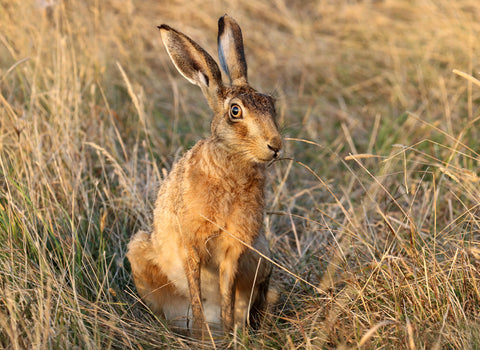
2. THEOLOGICAL SIGNIFICANCE
The symbolism of Ostara in pagan beliefs
Ostara, celebrated during the vernal equinox, is rich in symbolism that permeates Pagan beliefs, reflecting themes of balance, renewal, rebirth, and fertility. This sabbat is deeply intertwined with the cyclical patterns of the natural world, embodying the transition from the cold, barren winter to the burgeoning warmth and life of spring. The symbols and motifs associated with Ostara are not only representations of physical change but also metaphors for spiritual and internal transformation.
Balance and Equilibrium: Ostara occurs at a time of year when day and night are of equal length, symbolizing perfect balance and harmony in the natural world. For this year, 2024, it will happen on Tuesday March 19th @ 11:06pm. This balance is mirrored in Pagan beliefs as a time for individuals to seek equilibrium within themselves and in their lives. It serves as a reminder of the importance of harmony between light and darkness, action and reflection, growth and rest.
Renewal and Rebirth: The essence of Ostara is the theme of renewal, as evidenced by the reawakening of the earth after winter's slumber. Trees bud, flowers bloom, and animals emerge, symbolizing nature's resilience and capacity for renewal. In Pagan beliefs, this rebirth is also spiritual, encouraging practitioners to shed old patterns and embrace new beginnings, fresh perspectives, and personal growth.
Fertility: Ostara's timing with the beginning of the agricultural season underscores fertility's role in Pagan symbolism. The sabbat celebrates the fertile Earth's potential to nourish seeds, leading to abundant harvests. Fertility at Ostara extends beyond agriculture, symbolizing creative and productive energies in all areas of life, from projects and endeavors to personal relationships.
Eggs and Hares: Eggs, with their hard shells encasing new life, are potent symbols of Ostara, representing the hidden potential and promise of rebirth. Decorating eggs is a traditional Ostara activity reflecting this symbolism. The hare, often associated with the Goddess Eostre and later with the Easter Bunny, is another symbol of fertility and rapid reproduction, embodying the vitality and renewal of spring.
Flowers and Greenery: Flowers such as daffodils, tulips, and violets, which are among the first to bloom in spring, are closely associated with Ostara. They symbolize the beauty and transience of life, reminding practitioners to appreciate the moment and the cycle of life, death, and rebirth. Greenery, representing the Earth's return to life, is used to decorate altars and sacred spaces, reinforcing the connection to nature and the cycle of growth.
In Pagan beliefs, Ostara is a time to honor these symbols and their deeper meanings, integrating them into rituals, altars, and celebrations. The sabbat encourages reflection on balance, personal renewal, the nurturing of intentions, and the celebration of life's perpetual cycle. Through the symbolism of Ostara, Pagans connect with the rhythms of the natural world, honoring the Earth's renewal as a mirror of their own spiritual journey.
Ostara Ceremony on the streets of London, UK. Image Credit: Learn Religions
3. PREPARING FOR OSTARA
As we approach Ostara, the celebration of the spring equinox, preparation becomes a vital step in fully embracing the season's significance. This pivotal time of balance and renewal invites us to reflect and set intentions, creating sacred spaces that resonate with Ostara's energies. This guide will explore the importance of setting intentions and crafting a sacred environment to honor the spirit of renewal.
Setting Intentions
The Importance of Intentions for Ostara
Setting intentions at Ostara is akin to planting seeds in the garden of your life. Just as the earth reawakens to the touch of spring, so too can we initiate new beginnings and direct our personal growth. Intentions act as a blueprint for the coming cycle, focusing our energy on what we wish to bring forth. At Ostara, when day and night are balanced, we find a unique opportunity to contemplate our path forward, ensuring our actions and thoughts are aligned with our deepest desires and aspirations.
Examples of Intentions and How to Set Them
Intentions for Ostara can vary widely, depending on personal goals and desires. Some may focus on tangible objectives, such as starting a new project, improving health, or cultivating relationships. Others might aim for internal growth, like fostering gratitude, patience, or creativity. The key is clarity and sincerity, ensuring your intentions resonate with your true self.
To set your intentions, begin with a quiet moment of reflection. You might meditate, take a nature walk, or simply sit in a space that feels sacred to you. Consider what aspects of your life you wish to nurture, change, or manifest. Write these intentions down, speaking them aloud if it feels right. Some choose to incorporate this process into a ritual, lighting a candle or holding a stone as a physical anchor for their intentions.
Creating Your Sacred Space
Choosing a Location for Celebration
The location of your Ostara celebration should be a place that speaks to your sense of the sacred and connects you to the energies of renewal and growth. For many, this may be an outdoor space where the signs of spring are visible and tangible - a garden, a clearing in the woods, or even a balcony adorned with early-blooming flowers. Indoors, a dedicated altar or a quiet corner of your home can serve as a sanctuary for reflection and celebration. Consider the balance of light and shadow in your chosen location, honoring the equinox's theme of equilibrium.
Cleansing and Consecrating the Space
Once you've selected your location, cleansing and consecrating the space helps to purify the energy and dedicate it to your Ostara intentions. Cleansing can be achieved through various methods, such as burning sage or other herbs, sprinkling saltwater, or simply airing out the area. As you cleanse, envision any stagnant or negative energies dispersing, leaving a clean slate for positive growth.
Consecrating the space involves declaring your intentions for the area and inviting in the energies you wish to work with during Ostara. You might say a prayer, chant, or simply speak from the heart, asking for blessings of renewal and balance. Placing symbols of Ostara around the space - eggs, flowers, representations of hares - can further align it with the season's energies.
In preparation for Ostara, the care we take in setting intentions and creating a sacred space lays the groundwork for a meaningful celebration. It's an opportunity to align our inner landscape with the outer world, embracing the potential for renewal and growth that the spring equinox offers. Through mindful preparation, we open ourselves to the transformative power of Ostara, planting the seeds for a season of abundance and light.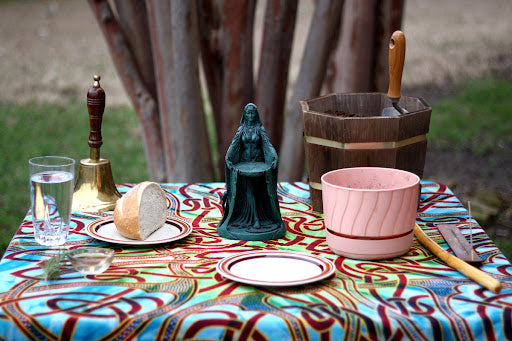
A Solitary Practitioners Ostara Altar. Image Credit: Patheos Pagan
4. CELEBRATING OSTARA
Celebrating Ostara, the spring equinox, ushers in a time of balance, renewal, and growth. It's a period when the day and night are equal, symbolizing harmony and new beginnings. This festive season is marked by various rituals, spells, and activities that reflect the essence of rebirth and rejuvenation. Let's delve into how to honor this sabbat, from solitary practices to family involvement.
Rituals and Spells
Casting a Circle
Casting a circle is a foundational practice in many Pagan traditions, creating a sacred and protected space for your Ostara rituals. To cast a circle, start by choosing a quiet spot where you won't be disturbed. You may use salt, stones, flowers or even flaming torches to physically mark the circle's perimeter.
- Stand at the circle's edge, facing east. Hold your wand, athame, or simply use your finger to direct energy.
- Visualize a protective energy emanating from your tool or hand, and as you walk clockwise around the circle, imagine drawing a line of light that encloses the space.
- Once the circle is cast, call upon the elements—air (east), fire (south), water (west), and earth (north)—to guard and bless your ritual. You may also invite any deities, spirits or ancestors you work with.
Ostara Ritual for Solitary Practitioners or Groups
- After casting your circle, light a green or yellow candle to symbolize the return of the sun's warmth and the blossoming of life.
- Place symbols of the season on your altar - eggs for fertility, flowers for beauty and growth, and seeds for potential.
- Reflect on what you wish to grow or change in your life. Write these intentions on pieces of paper.
- Plant the seeds in pots or your garden, each time stating an intention aloud. As you cover them with soil, visualize your intentions taking root.
- Thank the elements and any deities, spirits or ancestors for their presence and blessings and dismiss them from your ritual (you don't want them trapped!). Close the circle by walking counterclockwise, envisioning the protective energy being absorbed back into the earth.
Ostara Spells for Prosperity, Growth, and Renewal
- Prosperity Spell: Write your financial goals on a bay leaf. Plant it in a pot with a coin and a seedling. As the plant grows, so too will your prosperity.
- Growth Spell: Mix moon water with a few drops of essential oil (such as lavender for tranquility or mint for energy) in a spray bottle. Mist your personal spaces to encourage positive growth and change.
- Renewal Bath: Create a bath mix with Epsom salt, lavender, and rose petals. As you soak, envision washing away the old, making room for new opportunities and joy.
A guide to ritual can be found here: Llewellyn Ostara Ritual
And llewellyn's book on Ostara here: Llewellyn Ostara Book
Decorating the Altar
Items and Symbols to Include on Your Ostara Altar
Your Ostara altar should be a vibrant celebration of spring. Include:
- Eggs: Decorate them with symbols and colors that resonate with your intentions.
- Flowers: Daffodils, tulips, and other early spring blooms.
- Crystals: Clear quartz for clarity, rose quartz for love, and green aventurine for growth.
- Candles: Green for fertility, yellow for happiness, and pink for love.
Arranging Your Altar
Arrange your altar to reflect balance and growth. Place items symmetrically to symbolize equilibrium. The center can hold a representation of the Goddess Eostre or simply a vase of spring flowers. Let the arrangement be intuitive, allowing each item to find its place according to your connection with it.
Family Involvement
Involving Family Members
Ostara is a beautiful opportunity to involve your family in the celebrations:
- Egg Decorating: A classic and fun activity for all ages. Use natural dyes from vegetables and herbs for an eco-friendly twist.
- Garden Planting: Choose flowers or vegetables to plant together, each family member selecting something they wish to grow in the coming year.
Family-Friendly Activities and Crafts
- Nature Walks: Go on a walk to observe the signs of spring. Collect natural items for your altar or craft projects.
- Spring Banners: Create a banner with symbols of Ostara. Use fabric, paper, or any available materials, decorating it with images of rabbits, eggs, and flowers.
- Flower Crowns: Make beautfiful Flower Crowns to wear at your celebrations
Celebrating Ostara is an enriching experience that renews the spirit and strengthens connections—to the earth, our loved ones, and ourselves. Whether through solitary rituals or family gatherings, this sabbat is a reminder of the enduring cycle of life, death, and rebirth.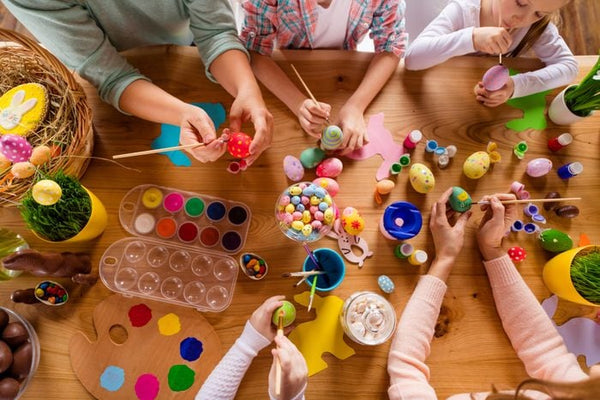
5. OSTARA TRADITIONS: COMMUNITY & FAMILY
Ostara, with its themes of renewal and rebirth, is a time not just for solemn rituals but also for fun, community engagement, and family bonding. This section delves into the lighter and more communal aspects of Ostara traditions, from feasting on seasonal dishes to engaging in creative egg decoration and embarking on nature walks.
Foods and Libations
Traditional Foods Associated with Ostara
The Ostara feast celebrates the fresh bounty of spring. Traditional foods include:
- Eggs: Symbolizing fertility and new beginnings, they can be served in various forms—boiled, as part of salads, or in quiches.
- Leafy Greens: Spinach, kale, and other fresh greens, representing the green earth coming back to life.
- Dairy Products: Cheese and butter, reflecting the abundance of spring and new life in animal herds.
- Sprouts and Seeds: Sunflower seeds, sprouts, and any seed-based food signify potential growth.
Recipes for Seasonal Dishes
-
Egg and Chive Pie
Celebrate Ostara with a savory egg pie, rich with cream and sprinkled with fresh chives. This dish symbolizes fertility and renewal, key themes of the holiday. -
Spring Vegetable Quiche
Use fresh, seasonal greens like asparagus, leeks, and spinach to create a light, flavorful quiche. This dish embraces the new growth of the season, making it a perfect addition to any Ostara feast. -
Lemon and Herb Roasted Chicken
Roast a chicken with lemon, garlic, and fresh spring herbs like rosemary and thyme. This main course brings the zesty flavors of spring to your Ostara celebration. -
Dandelion Green Salad
Toss young, tender dandelion greens with a simple vinaigrette for a salad that's both nutritious and symbolic of the season's growth. Dandelions, often one of the first greens to emerge in spring, embody the spirit of Ostara. -
Hot Cross Buns
Bake a batch of these sweet, spiced buns marked with a cross on top. Traditionally associated with spring festivals, hot cross buns are a delightful treat that signifies the end of Lent and the arrival of Easter. -
Deviled Eggs
A classic dish for spring gatherings, deviled eggs represent fertility and rebirth. Spice them up with your choice of herbs and spices for a tasty nod to Ostara's themes. -
Honey Glazed Root Vegetables
Celebrate the earth's bounty with a mix of parsnips, carrots, and beets glazed in honey and roasted until tender. This dish highlights the sweetness and depth of spring's first harvests. -
Barley Mushroom Risotto
Incorporate barley, a traditional grain of the season, into a creamy risotto with wild mushrooms. This hearty dish honors the earth's awakening and the return of abundance. - Egg Salad with Fresh Herbs: Hard-boiled eggs mixed with mayonnaise, mustard, and a variety of fresh herbs like dill or chives.
-
Violet Infused French Toast
Soak slices of bread in a mixture of eggs, milk, and a generous swirl of WytchWood's Blodeuwedd Violet Infused Maple Syrup. Fry until each side is golden brown. This breakfast treat, infused with the delicate essence of violet, offers a sweet start to Ostara celebrations. -
Rhubarb and Ginger Glazed Carrots
Glaze fresh carrots with WytchWood's Brigid Rhubarb & Ginger Infused Maple Syrup for a side dish that perfectly balances the tangy zest of rhubarb with the warm spice of ginger, bringing a touch of spring to your Ostara table.
Libations and Their Significance
Mead, a traditional drink made from honey, is perfect for Ostara, symbolizing the sweetness and abundance of the season. Freshly squeezed juices or herbal teas made with spring herbs like mint or lemon balm also align with Ostara's themes, offering refreshment and vitality.
You may also want to use WytchWood's Thor Mead Infused Maple Syrup for a nice Ostara cocktail!
Egg Decorations
The Symbolism of Eggs in Ostara
Eggs are a potent symbol of Ostara, embodying fertility, potential, and the mystery of life itself. Decorating eggs is a way to honor these themes, infusing them with your intentions for the coming season.
Techniques and Traditions for Decorating Eggs
- Natural Dyes: Use turmeric for yellow, beet juice for red, and cabbage for blue to naturally dye your eggs.
- Wax Resist: Before dyeing, apply designs with a wax crayon. The waxed areas will resist the dye, creating patterns.
- Decoupage: Adhere thin paper designs or natural elements like pressed flowers onto eggs using a clear adhesive.
Planting Seeds
The Significance of Planting Seeds During Ostara
Planting seeds is a tangible act of setting intentions. As the seeds sprout and grow, so too can your goals and aspirations for the year ahead.
How to Conduct a Seed Blessing Ritual
- Gather seeds you wish to plant and a pot or a patch of earth.
- Hold the seeds in your hands and visualize your intentions, infusing the seeds with your desires.
- Plant the seeds while stating your intentions aloud.
- Water the seeds, imagining your intentions growing with the plants.
Ostara Activities
1. Nature Walks
The Importance of Connecting with Nature During Ostara
Ostara is an ideal time to reconnect with the natural world, observing the subtle changes that mark the arrival of spring.
Ideas for Mindful Activities and Observations During Nature Walks
- Create a scavenger hunt for signs of spring: budding flowers, new leaves, or bird nests.
- Practice mindfulness or meditative walking, focusing on the senses and the beauty of nature awakening around you.
2. Crafts and Creations
DIY Projects for Ostara Decorations
- Floral Wreaths: Use fresh or silk flowers to craft wreaths symbolizing the circle of life and the blooming of spring.
- Garden Markers: Paint stones or sticks to mark what you've planted, adding a magickal touch to your garden.
3. Crafting as a Form of Spellwork
Crafting for Ostara can be a form of spellwork, with each creation imbued with your intentions. Whether making a charm/talisman/amulet for prosperity or a decorative piece that represents growth, your creative energy is a powerful tool for manifesting your desires.

6. CONNECTING WITH DEITIES
Ostara, the time of the Spring Equinox, is ripe with life's resurgence and the Earth's renewal. This season is closely associated with various deities who symbolize fertility, growth, and renewal. Connecting with these deities during Ostara can deepen your spiritual practice and align your celebrations with the energies of rebirth and rejuvenation that define this time of year.
Deities Associated with Ostara
Several deities from different pantheons are associated with spring and the themes of Ostara. Here are a few significant ones:
- Eostre: The Anglo-Saxon goddess of dawn, spring, and fertility, from whom Ostara gets its name. She represents new beginnings and the awakening of the Earth.
- Persephone: The Greek goddess of spring and vegetation, whose return from the Underworld symbolizes the Earth's blossoming and the return of life after winter.
- Freya: In Norse Heathen theology, Freya is the goddess of love, beauty, and fertility. Her connection to the growing light and life of spring makes her a fitting deity to honor during Ostara.
- Brigid: Though primarily associated with Imbolc, Brigid's themes of fire, healing, and poetry carry into Ostara. Her flames can represent the returning warmth of the sun.
- Blodeuwedd: The Welsh Goddess of spring, owls, flowers, emotions, the wisdom of innocence and initiation ceremonies.
- Flora: The Roman goddess of flowers and spring, Flora embodies the blooming of the natural world and the beauty of the season.
How to Honor and Work with These Deities During Your Celebration
- Altar Decorations: Decorate your altar with symbols and offerings that correspond to the deity you wish to honor. For Eostre, eggs and hares; for Persephone, pomegranates and flowers; for Freya, amber and cat figurines; for Brigid, candles and poetry; for Flora, an abundance of flowers.
- Offerings: Leave offerings that are traditionally associated with the deity. This could include fresh flowers, seeds, honey, or baked goods. The act of giving offerings is a way of showing respect and gratitude.
- Invocation: Begin your Ostara ritual by invoking the deity you wish to connect with. Speak their names, tell their stories, and invite them into your sacred space. Express your intentions and ask for their blessings.
- Ritual Acts: Engage in ritual acts that align with the deity's attributes. For example, plant seeds as an offering to Persephone as the goddess of vegetation, or craft a fertility charm in honor of Freya. These acts can be both symbolic and tangible ways of working with the deity's energy.
- Meditation and Prayer: Spend time in meditation or prayer, focusing on the qualities of the deity you are honoring. This can be a way of attuning yourself to their energy and receiving guidance or insight.
- Community Celebrations: If you're part of a pagan community, organize a group ritual or celebration that honors one or more of these deities. Group rituals can amplify the collective energy and create a shared spiritual experience.
Connecting with deities during Ostara can enrich your celebration, providing a deeper spiritual context and linking your practice to the ancient traditions that honor the cycles of nature. By working with these deities, you invite the energies of growth, renewal, and transformation into your life, celebrating the vibrant resurgence of the earth in spring.
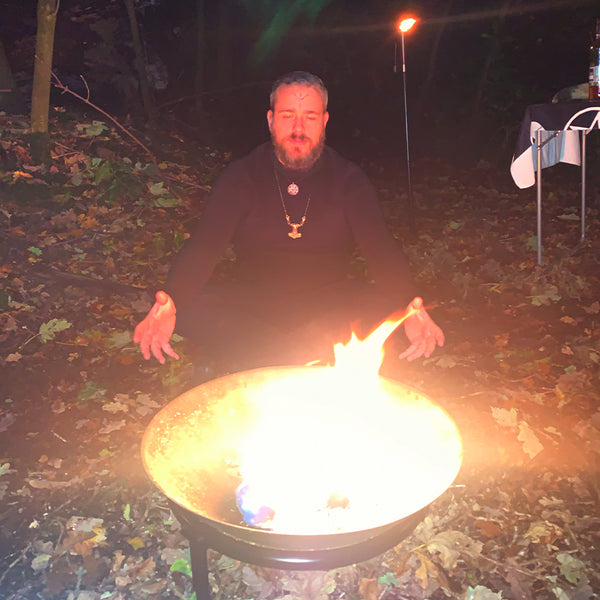
7. OSTARA MEDITATION & REFLECTION
Ostara, the Spring Equinox, offers a unique opportunity for renewal, growth, and rebirth. As nature awakens, it's the perfect time for personal awakening and reflection. Engaging in meditation and using journal prompts can help you align with the energy of Ostara, setting intentions for the coming cycle.
Guided Meditation for Ostara
Preparation:Find a quiet space where you won't be disturbed. You may choose to sit in your sacred space or altar, decorated with symbols of Ostara such as flowers, eggs, and greenery. Light a candle to represent the returning light of spring and perhaps an incense that evokes the freshness of the season.
Meditation Process:
- Begin by taking deep, cleansing breaths. With each exhale, release any tension or worries. Feel yourself grounding into the earth, stable and secure.
- Visualize yourself standing in a lush, vibrant forest at dawn. The first rays of sunlight are piercing through the canopy, casting the world in a gentle, golden light.
- As you walk through the forest, you notice the signs of spring all around you – flowers blooming, birds singing, and a feeling of renewal in the air.
- Up ahead, you see a clearing bathed in sunlight. In the center of the clearing stands a majestic tree, its branches reaching towards the sky, roots deep in the earth.
- Approach the tree, placing your hands upon its bark. Feel the pulse of life flowing through it, connecting you to the energy of growth and renewal.
- Now, reflect on your life. What areas are you looking to grow and renew? What seeds of intention are you planting this Ostara?
- Visualize your intentions as seeds, planting them in the fertile ground at the base of the tree. With each seed planted, imagine how it will grow, representing the manifestation of your desires.
- Spend a few moments basking in the energy of the clearing, feeling your intentions taking root, supported by the nurturing energy of the earth and the vitality of the sun.
- When you are ready, thank the tree and the forest for their wisdom and guidance. Slowly, begin to walk back through the forest, carrying with you the energy of renewal and growth.
- Gradually bring your awareness back to the present, grounding yourself once more. When you feel ready, open your eyes, and gently extinguish the candle.
Journal Prompts for Reflection and Manifestation
After your meditation, or as a separate reflective practice, use these journal prompts to further explore your intentions for the coming season:
- What aspects of my life are emerging from dormancy? How can I nurture this growth?
- What intentions am I setting this Ostara? How do these intentions align with my higher self and my path?
- What does balance mean to me in the context of the equinox? How can I cultivate balance in my life?
- What are the seeds of potential I am planting? How can I ensure they receive the nourishment they need to thrive?
- In what ways can I embody the energy of renewal and rebirth in my daily life?
- What are my hopes for the coming season? How can I take actionable steps towards these hopes?
- Reflect on a challenge you've overcome since the last equinox. How has this experience prepared you for growth?
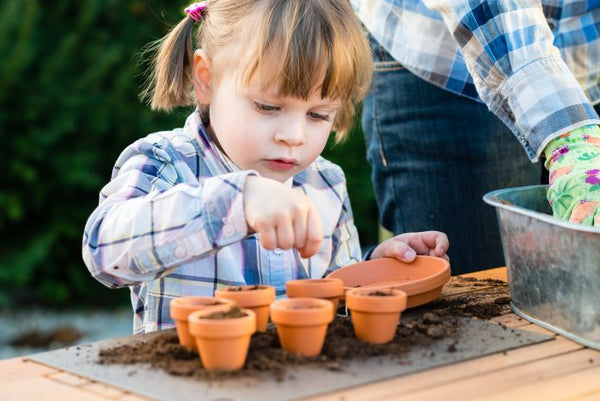













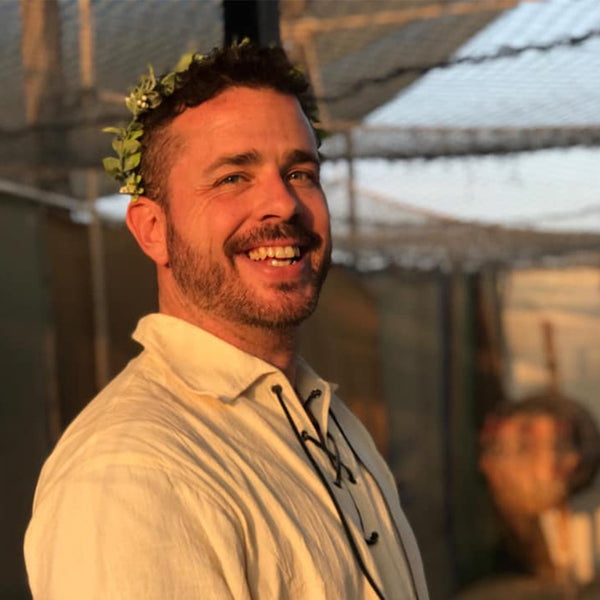
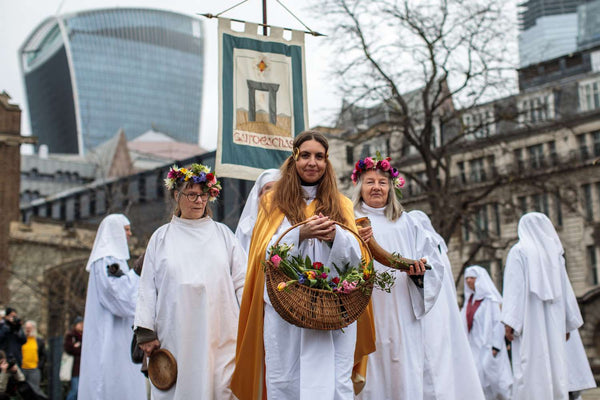
Leave a comment (all fields required)